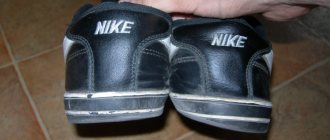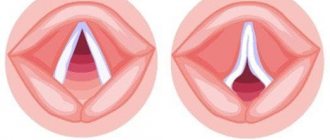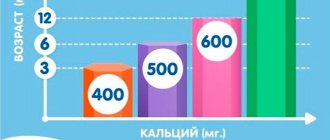Otitis media in a child: what is it?
Most often (in 25-40% of cases, and in infants up to one year - in 65-95% of cases) a reference to the study is Bogomilsky M.R., Samsygina G.A., Minasyan V.S. Acute otitis media in newborns and infants. M.: GOU VPO RGMU, 2007. 190 pp.) acute otitis media appears in children. It is an inflammation of the middle ear that is caused by various bacteria or viruses.
This disease, as a rule, occurs against the background of acute respiratory viral infection, and the cause of otitis in a child is the penetration of infection from the nasopharynx into the middle ear.
Acute otitis media in children
Correct diagnosis and rational treatment literally in the first hours are extremely important for the further course of the disease; they can interrupt the rapid course, prevent hearing loss and even severe, in particular intracranial, complications. Symptoms are extremely varied and largely depend on the age of the child. Starting from school age, symptoms are practically no different from those in adults. The course of the disease in newborns and infants, in early and preschool age is very different. In this regard, we provide their separate description. Decisive for diagnosis is the appearance of discharge (otorrhea) upon the occurrence of perforation of the eardrum or during its paracentesis (incision). The absence of discharge after paracentesis does not definitively indicate the absence of an inflammatory process in the tympanic cavity, since sometimes exudate has not yet had time to form by this time. Features of the diagnosis of acute otitis media in newborns, infants and young children. A very important role for diagnosis at this age is played by the anamnesis collected from the mother. When interviewing, you should pay attention to the course of pregnancy and childbirth (prolonged, birth trauma), and full term. Find out information about taking medications, alcohol, smoking, ear disease in the mother, administration of ototoxic drugs, previous viral diseases, at what stage of pregnancy, what was the feeding; It follows that after which the child’s condition worsened. Ear disease is often preceded by acute rhinitis with profuse nasal discharge, respiratory infections, gastrointestinal disorders, sometimes trauma (falling out of bed), allergic diseases. The leading symptom of acute inflammation of the middle ear is severe, often sudden spontaneous pain. It is associated with the rapid accumulation of exudate in the tympanic cavity and pressure on the endings of the trigeminal nerve, which innervates the mucous membrane. A child's reaction to pain is expressed differently and depends on his age. Until 5-6 months, the child cannot yet determine the location of the pain and the affected side. He reacts to pain with a cry, a pendulum-like shaking of his head, reminiscent of prayer movements. Rocking in the arms does not help; the child refuses to breastfeed, since when sucking, movements in the joint of the lower jaw are easily transmitted to the walls of the external auditory canal and the tympanic cavity. Sometimes the baby prefers to take the breast opposite the sore ear. When the sore ear is at the bottom, the pain subsides slightly. The preferred position of the head in bed on the painful side is also associated with this; apparently, the warmth from the pillow also somewhat reduces pain. A very common and popular method among pediatricians for studying a child’s reaction when pressing on the tragus should be treated very critically due to the large number of false-positive reactions. It is recommended to conduct the study on a sleeping child. The same applies to the child’s reaction when pressing on the area behind the ear, since at this age the system of air cells of the mastoid process has not yet been formed. However, if the child’s reaction is persistent and repeated, one can think about the development of periostitis. An important general symptom is body temperature. On the 2-3rd day of the disease, it usually rises sharply, sometimes to 39-40 ° C, although there is a variant of the course of the disease (the so-called latent otitis), in which the temperature is subfebrile. An increase in body temperature is accompanied by severe intoxication. It is more often expressed by excitement: the child does not sleep, screams, the condition worsens at night, sometimes, on the contrary, a depressed state occurs, apathy, vomiting, regurgitation, and increased bowel movements. The child refuses to eat. After clarifying the medical history and general symptoms, they proceed to the examination. Pay attention to the child’s posture, the condition of the skin, lymph nodes, abdominal wall, etc., since acute otitis media can be a consequence of infectious, allergic and gastrointestinal diseases. When examining children of this age, special attention is paid to neurological symptoms, which can develop as a result of severe intoxication, symptoms of irritation of the meninges (meningismus). The development of menschism is explained by a good network of anastomoses (circulatory and lymphatic) between the middle ear and the cranial cavity. It is necessary to check the basic meningeal reflexes (Kernig, Brudzinsky). The same applies to eye symptoms: limitation of gaze and mobility of the eyeball, the appearance of nystagmus. Before moving on to endoscopy and palpation, during an external examination, pay attention to the condition of the facial muscles (facial nerve paresis); protrusion of the ears, severity of the postauricular transitional fold; condition of the mastoid area, temperature, color, swelling or infiltration of the skin over it; enlargement and tenderness of the anterior and posterior auricular lymph nodes; the condition of the sternocleidomastoid muscles and their anterior edge, where the jugular vein passes. After a detailed examination, an otoscopy is performed. Examination of the eardrum in infants, and even more so in newborns, is very difficult due to the narrowness of the external auditory canal and the almost horizontal position of the eardrum. At this age, the external auditory canal is often filled with vernix and epidermal scales, which should be carefully removed using a probe and cotton wool before inserting even the narrowest funnel. Usually it is possible to examine only the upper parts of the eardrum, which are injected at the beginning of the disease and then become hyperemic. The remaining identification marks, as a rule, cannot be distinguished. The light reflex appears in a child at least 1.5 months old. There are a number of other factors that distort the typical otoscopic picture for otitis media in adults. Insertion of the funnel and toilet of the external auditory canal can themselves cause hyperemia of the eardrum, as well as anxiety in the child. The epidermal layer of the tympanic membrane in a newborn and infant is relatively thick and not always hyperemic even with an inflammatory process in the tympanic cavity. All this significantly reduces the value of the otoscopic picture, significantly complicating diagnosis, which is based more on general symptoms. Modern pneumatic otoscopes make the examination somewhat easier, which, in addition to magnifying the elements of the eardrum, make it possible to determine its mobility. The same applies to the study of auditory function, which is only possible with the help of complex objective methods. Some data can be obtained by x-ray examination of the temporal bones, which reveals a decrease in the airiness of the cavities of the middle ear. The hemogram does not have characteristic changes, because, like any inflammatory process, acute otitis media is accompanied by leukocytosis with a shift of the blood count to the left, increased ESR, etc. Thus, the diagnosis of acute inflammation of the middle ear in infants and newborns in the initial period is very difficult. However, at this time, an urgent determination of treatment tactics for the child is required.
Signs of otitis in a child: what worries the baby?
The first symptom of otitis in a child is not easy to detect, because only a very attentive and mature child will pay attention to the noise and tingling in the ear. After this, the child may complain of uncomfortable congestion in the ear, as well as a feeling of pressure and fullness. Parents may notice that the child has difficulty hearing. With further exacerbation of the disease, the symptoms of otitis in the child are accompanied by pain in the ear, which the baby calls “shooting”, and a sharp increase in temperature. The temperature during otitis in a child can reach 38-40 degrees and, as a rule, lasts for 3-7 days. A high temperature during otitis in a child is due to the short Eustachian tube in the baby’s ear: due to this anatomical structure, microbes can very quickly move into the middle ear from the nose or throat, inflammation occurs faster and lasts longer.
Otitis in a child without fever occurs when the cause of the disease is an ear injury (as a rule, this happens when the child’s ear canals are not carefully cleaned) or if otitis has taken a chronic form. In this case, there may be severe pain and burning in the ear, and there is a possibility of suppuration.
Often with otitis media there is discharge from the ear, and in young children otitis media may be accompanied by diarrhea and nausea.
What are the signs of otitis in a child that should promptly consult a doctor?
You should immediately contact an ENT doctor if the following symptoms of otitis appear in a child:
- with pain when tapping on the area behind the ear;
- acute pain in the ear area accompanied by a rise in temperature;
- with purulent or bloody discharge from the ear.
Inadequate diagnosis and treatment of acute otitis media can lead to the development of complicated forms - otogenic meningitis, sepsis, paresis of the facial nerve, abscesses of the brain and cerebellum, persistent hearing loss and chronic otitis in a child.
Hearing loss (when a child hears poorly after otitis media) even of the first degree at an early age causes a disturbance in the formation of speech and intellectual development, worsens the quality of life of the child, and then of an adult.
What is otitis media?
Otitis is a disease characterized by the presence of an inflammatory process in one of the parts of the ear. Most often it appears as a consequence of an infectious disease. Quite rarely, the cause is a virus.
Types of disease
Depending on where the inflammation is located in the ear, there are 3 types of otitis media.
- Outer.
The inflammatory process is localized in the outer part of the ear canal. The inflammatory process can be a boil, and sometimes be diffuse in nature, spreading to the entire ear canal.
- Average.
The development of otitis media in the middle ear is most often diagnosed in children. Various diseases of the nasopharynx are considered factors that provoke this type of inflammation. Inflammation affects the cavity of the membrane and nearby elements.
- Interior.
In most cases, it affects young children. Inflammation of the inner ear, or labyrinthitis, appears as a consequence of complications of otitis media.
Forms
Depending on the type of pathogen, the forms of the disease are distinguished:
- Viral otitis media, caused by a viral infection. This type of otitis in most cases occurs as a complication of acute respiratory viral infection, herpes or influenza.
- Bacterial, caused by the penetration of microorganisms into the ear: streptococcus, pneumococcus or Haemophilus influenzae.
- Fungal otitis media occurs due to exposure to various types of fungi.
- Allergic otitis media appears in a child as a reaction of the body to a certain type of allergen.
- Traumatic otitis media is diagnosed when there is mechanical damage to the membrane or walls of the passage.
Stages of development
Ear inflammation has several stages of development. They are characterized by certain characteristics. The symptoms of each stage may differ in the complexity of the course of otitis and depend on the timeliness of contacting a doctor.
- Preperforative stage.
In the initial stage of the disease, the child notices severe pain in the ear. Due to nerve irritation, pain may radiate to the temporal region or jaw. Inflammation reduces the activity of the auditory membrane ossicles, and the child begins to hear poorly.
- Causes, symptoms and treatment of middle ear inflammation
Pus accumulates inside the ear, redness and an increase in the size of the eardrum are observed. The pain gets worse over time. The duration of the pre-perforation period varies from several hours to several days.
- Perforated stage.
Accumulated purulent discharge ruptures the membrane. Immediately after perforation, quite a lot of pus comes out, sometimes mixed with blood. The child feels better and the pain subsides.
Body temperature begins to gradually return to normal, and signs of intoxication in the body disappear. The child's condition returns to normal by the 7th day.
The rupture of the membrane in the perforated stage is usually minor. The exception is when the child is sick with tuberculosis, measles or scarlet fever. If the membrane is perforated, pus may not come out, but into the skull, which leads to a sad outcome.
- Reparative stage.
At the last stage, the ruptured membrane heals. There is no purulent discharge, swelling goes away. If the membrane ruptures up to 1 mm in diameter, the wound is carefully healed. If the perforation is large, a scar will form on the membrane.
Why is otitis media dangerous?
The danger posed by ear inflammation lies in the structural features of the hearing organ. Eustachian labor is wider in diameter than that of an adult. Consequently, the infection easily penetrates and causes inflammation twice as fast. If help is not provided to the child in time, he may partially lose his hearing or become deaf altogether.
Who gets it most often?
As a rule, there is no separate risk group for developing otitis media. Every child may develop an inflammatory process in the organ of hearing. But children who are most susceptible to the disease are:
- weak immunity;
- chronic diseases of the ENT organs;
- underweight;
- anemia, rickets.
What is otitis media like?
When the outer ear is inflamed, an otolaryngologist diagnoses otitis externa in a child. Otitis media of the middle ear or inner ear (labyrinthitis) may also be diagnosed. Bilateral otitis in a child is said to occur when inflammation affects both ears.
With serous otitis in children (exudative otitis), fluid accumulates in the middle ear cavity, but there may be no signs of acute inflammation (severe pain and fever). The catarrhal form of purulent otitis in a child begins with acute pain, the cause of which is inflammation and the formation of fluid, while the pain is felt in the jaw, back of the head and temple. Then the eardrum ruptures and pain occurs less and less. When the inflammation subsides, pus begins to flow out of the ear: there is no more pain, but hearing decreases sharply.
How to recognize otitis? Symptoms in children
How can parents understand that their child has otitis media? Medical specialists identify the following symptoms:
- The child's temperature is above 38°C.
- The child complains of headache or dizziness.
- The child feels sick or vomits.
- The baby experiences shooting or constant aching pain in the ear or behind the ear.
- There is purulent discharge (or fluid) from the ear.
- You notice hearing loss or tinnitus.
- The child is irritable, restless, sleeps poorly, refuses to eat (even his favorite food).
How to treat otitis media in a child
Otitis: treating a child at home
Uncomplicated acute otitis media is usually treated at home, but under the supervision of a doctor. Parents often ask: are antibiotics needed for otitis media in children? Yes, your doctor will usually prescribe antibacterial ear drops to combat the infection. When body temperature rises, antipyretic and anti-inflammatory drugs are used in a special children's form. And to reduce unpleasant symptoms, painkillers are used. In the early stages of otitis media, if there is swelling of the auditory tube, vasoconstrictor nasal drops are prescribed.
What should not be done when treating otitis in a child
You should not try to rinse your child’s nose: this may force the rinsing fluid into the ear and increase the pain.
Anti-otitis drops for children: choose and instill correctly
It's important to know that not all ear drops are safe. Many products contain ototoxic components and can cause hearing loss or damage. Therefore, you cannot choose drops on your own; you must consult a doctor. In addition, after an examination, an otolaryngologist may identify another important limitation of the use of drops - the presence of a perforated eardrum in the ear.
According to the researchers (link to the study V.S. Minasyan, E.Yu. Radtsig, Acute otitis media: a memo for pediatricians. M., 2018), practically the only antibacterial ear drops approved for use without age restrictions for otitis media ( including with perforation of the eardrum), is a 2.6% solution of rifamycin, the effectiveness of which has been clinically proven.











